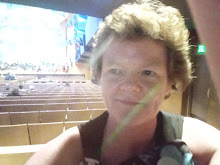"Hugh saw an open door to his left, and just made a break for it with only his camera bag..."
RIP:
HONG KONG -- Hugh Van Es, a Dutch photojournalist who covered the Vietnam War and recorded the most famous image of the fall of Saigon in 1975 - a group of people scaling a ladder to a CIA helicopter on a rooftop - died Friday morning in Hong Kong, his wife said. He was 67 years old.
...
Slender, tough-talking and always ready with a quip, Van Es was considered by colleagues to be fearless and resourceful. He remained a towering figure after the war in journalism circles in Asia, including his adopted home in Hong Kong.
...
As North Vietnamese forces neared the city, upwards of 1,000 Vietnamese joined American military and civilians fleeing the country, mostly by helicopters from the U.S. Embassy roof.
A few blocks distant, others climbed a ladder on the roof of an apartment building that housed CIA officials and families, hoping to escape aboard a helicopter owned by Air America, the CIA-run airline.
From his vantage point on a balcony at the UPI bureau several blocks away, Van Es recorded the scene with a 300-mm lens - the longest one he had.
It was clear, Van Es said later, that not all the approximately 30 people on the roof would be able to escape, and the UH-1 Huey took off overloaded with about a dozen.
The photo earned Van Es considerable fame, but in later years he told friends he spent a great deal of time explaining that it was not a photo of the embassy roof, as was widely assumed.
The image gained even greater iconic status after the musical Miss Saigon featured the final Americans evacuating from the city from the Embassy roof by helicopter. Van Es was upset about the play's use of the image that he so famously captured, and believed he was ripped off. He had long considered legal action but decided against it.
Born in Hilversum, the Netherlands, Hubert Van Es learned English from hanging out as a kid with soldiers during World War II.
He said he decided to become a photographer after going to a photo exhibit at a local museum when he was 13 years old and seeing the work of legendary war photographer Robert Capa.
After graduating from college, he started working as a photographer in 1959 with the Nederlands Foto Persbureau in Amsterdam, but Asia became his home.
...
He covered the Moro rebellion in the Philippines and was among the horde of journalists who flew into Kabul to cover the Soviet invasion of Afghanistan. CBS cameraman Derek Williams got through immigration but everyone else was stopped and held in the transit lounge.
"As they were then being shepherded back to the plane," Williams recalled, "Hugh saw an open door to his left, and just made a break for it with only his camera bag. He ran through the terminal and jumped into a taxi to try to get to the Intercontinental Hotel."
Afghan police arrested van Es, but the plane had taken off so they took him to the hotel. Williams said he and van Es spent three days in Kabul before being expelled. Van Es' still photos, for Time magazine, were the first to capture Soviet tanks rolling into Afghanistan.
He and his wife, Annie, whom he met in Hong Kong, were married for 39 years. He is survived by Annie and a sister in Holland.

0 Comments:
Post a Comment
<< Home